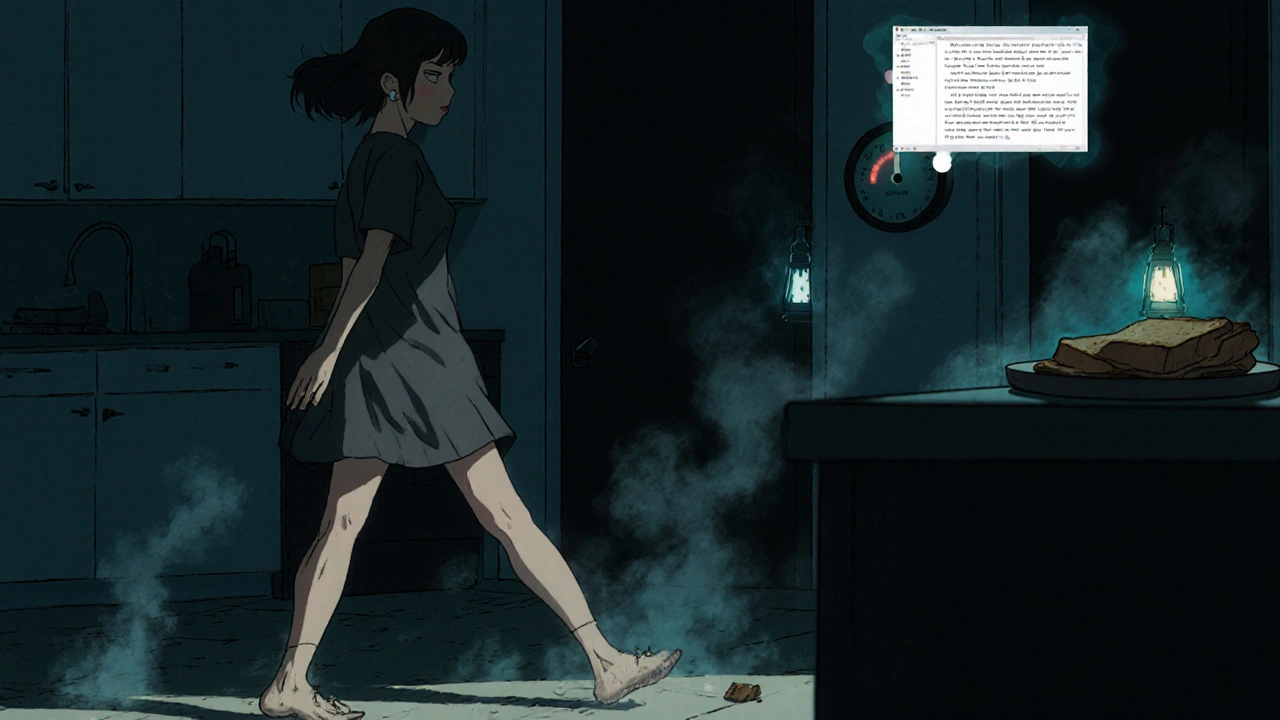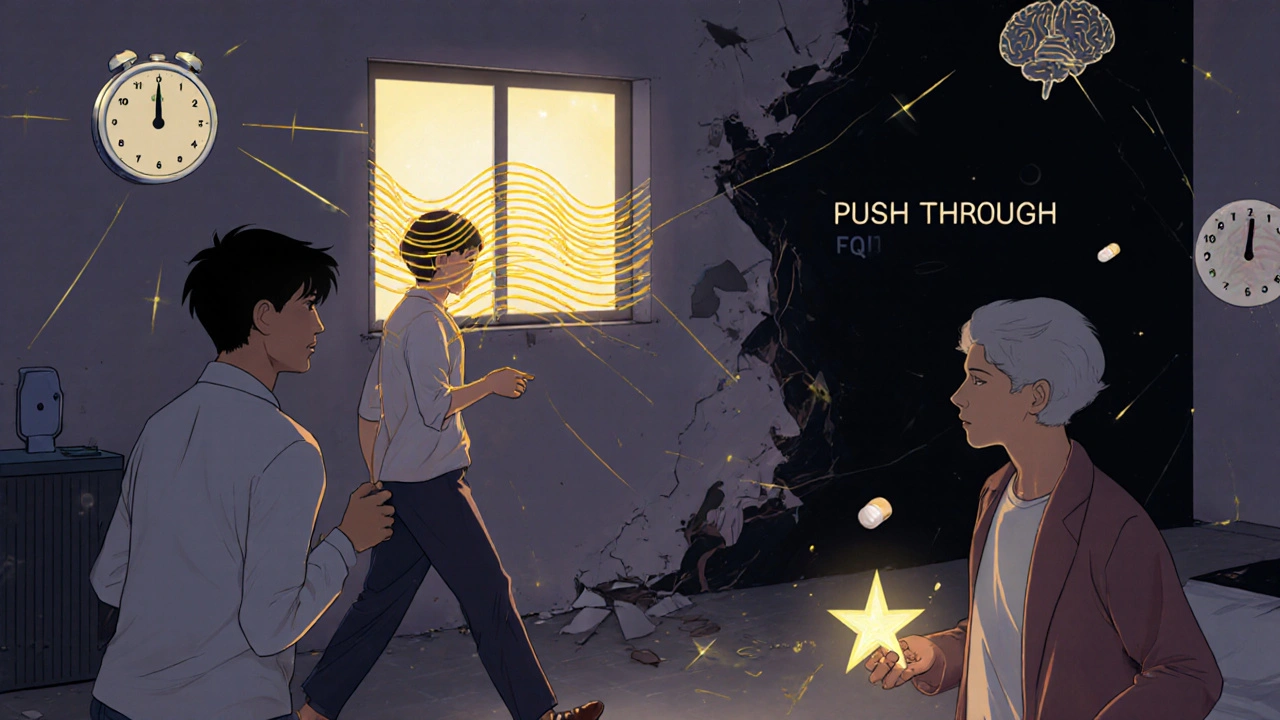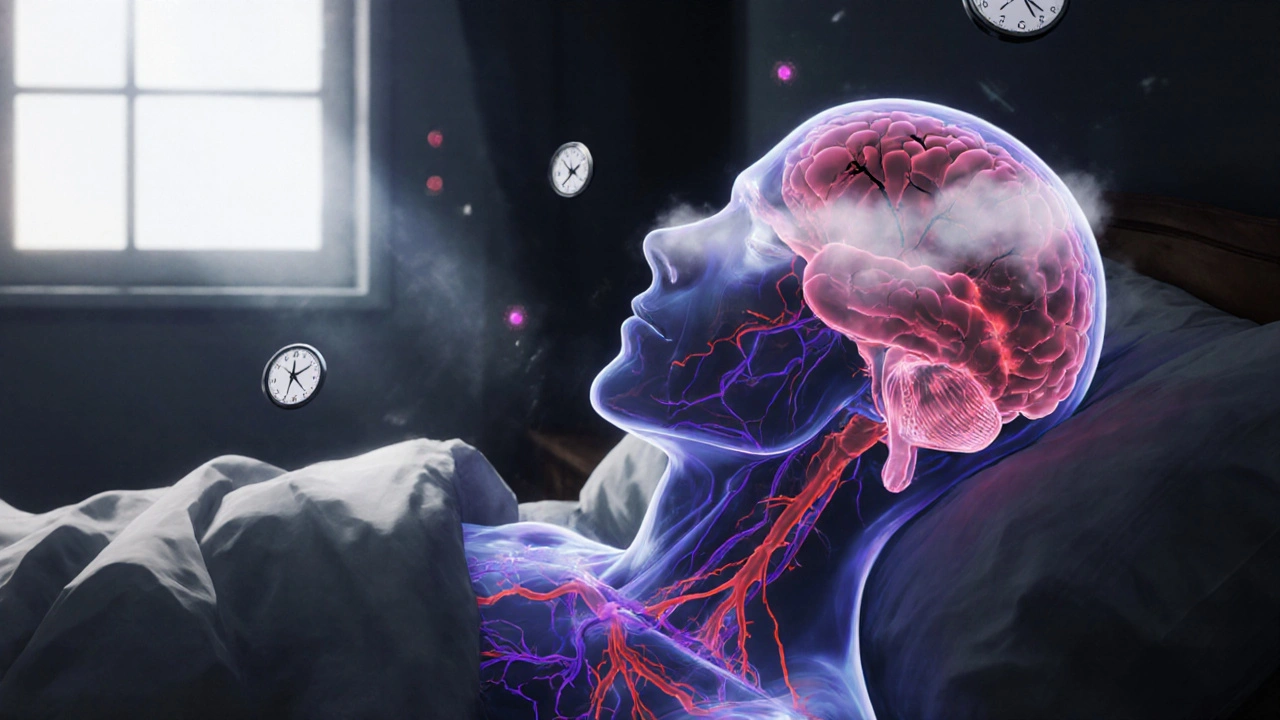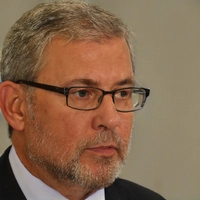For people living with autoimmune diseases, fatigue isn’t just being tired. It’s waking up after eight hours of sleep and still feeling like you’ve run a marathon. It’s needing to sit down halfway through making breakfast. It’s staring at a computer screen for 10 minutes and forgetting what you were reading. This isn’t normal exhaustion. This is autoimmune fatigue - a relentless, body-wide drain that affects nearly every person with an autoimmune condition.
Studies show that 98% of people with autoimmune diseases report severe fatigue. That’s not a typo. It’s not just lupus or rheumatoid arthritis patients - it’s everyone. In fact, fatigue ranks higher than pain or joint damage in how much it ruins daily life. You can have mild arthritis and still be crippled by fatigue. You can be in remission and still feel like you’re dragging through wet cement. And no, resting doesn’t fix it.
Why Your Body Feels Like It’s Running on Empty
Autoimmune fatigue doesn’t come from lack of sleep or stress. It comes from your immune system attacking your own body - and accidentally dragging your brain and muscles down with it.
When your immune system is stuck in overdrive, it releases inflammatory chemicals called cytokines - especially IL-1β, IL-6, and TNF-α. These aren’t just floating around causing joint swelling. They cross into your brain, mess with your energy centers, and trigger what doctors now call neuroinflammation. Brain scans show this inflammation clearly in over 80% of patients with severe fatigue. It’s like your brain has a constant low-grade fever, even when your body feels fine.
On top of that, your stress system - the HPA axis - gets worn out. This is the part of your body that normally releases cortisol to help you handle stress. But in autoimmune fatigue, cortisol production drops by 20% or more. That means even small tasks feel overwhelming because your body doesn’t have the chemical fuel to respond.
And then there’s your mitochondria - the tiny power plants inside your cells. In 65% of people with autoimmune fatigue, these power plants are running at half speed. They produce less ATP, the energy currency your muscles and brain need. So even if your heart and lungs are fine, your muscles just can’t keep up. That’s why you can sit all day and still feel exhausted - your cells aren’t making enough energy to begin with.
It’s Not Just One Disease - It’s Everywhere
Fatigue doesn’t pick favorites. It shows up in almost every autoimmune condition:
- 98% of people with systemic lupus erythematosus (SLE)
- 96% with multiple sclerosis (MS)
- 94% with rheumatoid arthritis (RA)
- 92% with Sjögren’s syndrome
- 90% with celiac disease
- 88% with type 1 diabetes
Some conditions are worse than others. Sjögren’s patients often report fatigue scores of 8 out of 10 - the worst of any autoimmune disease. In RA, 63% of patients say fatigue is their most disabling symptom, even worse than joint pain. And if you have myalgic encephalomyelitis/chronic fatigue syndrome (ME/CFS), which often overlaps with autoimmune disease, fatigue lasts over six months and gets worse after even tiny efforts - a sign called post-exertional malaise.
Even more surprising: fatigue doesn’t always match how active your disease is. You can have low antibody levels and still be wiped out. Or high inflammation and feel okay. That’s why doctors can’t just check your blood tests and say, “You’re fine.” Fatigue has its own rules.
How Doctors Measure It - And Why Most Don’t
Fatigue isn’t something you can see on an X-ray. So doctors use tools to measure it:
- FACIT-F: A 13-question survey where scores below 34.5 mean severe fatigue
- MFI-20: A 20-item scale where scores above 18.7 signal major impairment
- Visual Analog Scale: You mark a line from “not tired” to “worst ever”
Here’s the problem: only 12% of rheumatologists regularly use these tools. Most still ask, “Are you tired?” and take your yes or no as the whole story. That’s why so many patients feel dismissed. One Reddit user wrote: “My doctor told me to sleep more. I’ve been sleeping 10 hours a night for five years.”
Without proper measurement, fatigue stays invisible - and untreated.

What Actually Helps - And What Doesn’t
There’s no magic pill. But there are strategies that work - if you use them right.
1. Medications That Target Fatigue Directly
Some drugs aren’t just for inflammation - they help with energy:
- Low-dose hydrocortisone (10-20mg daily): Helps if your cortisol is low. Works for 35-40% of patients with HPA axis dysfunction.
- Modafinil: Used off-label for MS fatigue. Reduces fatigue by 28% compared to placebo.
- CoQ10 supplements (200mg/day): Boosts mitochondrial energy. Shows 29% improvement in fatigue scores in trials.
These aren’t quick fixes. They take weeks to show effect. And they’re not for everyone. You need testing first - like cortisol levels or mitochondrial function - to know what’s right for you.
2. Movement That Doesn’t Break You
Resting more doesn’t help. But moving too much makes it worse. The key is graded pacing.
Start with 5 minutes of walking or stretching. Do it every day. If you feel worse 24-48 hours later, you did too much. Scale back. If you feel okay or slightly better, add 2-3 minutes next week. Slow progress beats crash-and-burn every time.
Studies show this approach improves fatigue by 32% - but only if it’s personalized. Pushing through pain or exhaustion leads to flare-ups. Many patients report being hurt by poorly managed physical therapy. Listen to your body. Not your fitness app.
3. Sleep That Actually Restores You
Most people with autoimmune fatigue have poor sleep - but not because they’re tossing and turning. Their body’s internal clock is broken.
Melatonin, the sleep hormone, is 37% lower in amplitude in these patients. That means your body doesn’t know when to sleep or wake up. Fixing this helps:
- Wake up and go to bed at the same time every day - even weekends
- Avoid screens 90 minutes before bed
- Get 15-30 minutes of morning sunlight
- Treat sleep apnea or restless leg syndrome if present
When done right, this improves fatigue by 22-25%.
4. Mindset Training That Rewires Your Brain
Cognitive behavioral therapy adapted for autoimmune fatigue (CBT-AF) isn’t about “thinking positive.” It’s about changing how you relate to energy.
Therapists teach you to:
- Recognize your personal energy limits
- Plan activities around your best times of day
- Let go of guilt when you cancel plans
- Stop comparing yourself to healthy people
At six months, CBT-AF improves fatigue 27% more than standard care. It’s not therapy for depression. It’s therapy for survival.
The Best Approach: Combining Everything
One 2021 study followed 1,247 patients with autoimmune fatigue. Half got standard care. Half got a full package: medication optimization + CBT-AF + paced exercise + sleep coaching.
After 12 months, the group with the full plan had 45% greater fatigue reduction. Sixty-eight percent of them reached a clinically meaningful improvement - meaning they could actually do daily tasks without collapsing.
That’s the model. No single fix works alone. But together, they change everything.

What’s Coming Next
Researchers are now racing to find better tools. The NIH just funded $18.7 million for fatigue-specific research. Promising areas:
- Anti-IL-6 drugs showing 38% fatigue reduction in early trials
- Transcranial magnetic stimulation (TMS) improving fatigue by 33% in treatment-resistant cases
- Biomarker panels to predict who will respond to which treatment
The first FDA-approved fatigue treatment for autoimmune disease could arrive by 2026. But until then, the tools we have now - if used correctly - can give you back your life.
What Patients Say Works
On patient forums, people share what actually helped after years of trial and error:
- Pacing: 78% success rate. Planning rest before activity, not after.
- Sleep hygiene: 72% success rate. Consistent schedule, no caffeine after noon.
- CoQ10 or magnesium supplements: 65% reported improvement.
- Eliminating gluten: Helped 41% of those with celiac or non-celiac gluten sensitivity.
And what doesn’t work? Pushing through. “I tried to ‘be strong’ and went to work full-time. I ended up in the hospital for two weeks,” shared one patient. The truth is, fatigue isn’t weakness. It’s a warning.
Where to Start Today
If you’re drowning in fatigue, here’s your first step:
- Track your energy for 7 days. Note what you do and how you feel before and after.
- Ask your doctor for a FACIT-F or MFI-20 test. Don’t accept “you’re just tired.”
- Start pacing. Do one small thing every day - and rest before you’re exhausted.
- Fix your sleep. Go to bed and wake up at the same time. Get morning light.
- Consider CoQ10 (200mg/day) - it’s safe, affordable, and backed by science.
You don’t need to fix everything at once. Just one step. Then another. Fatigue doesn’t disappear overnight - but it can get better. And you don’t have to accept it as your new normal.
Is autoimmune fatigue the same as regular tiredness?
No. Regular tiredness goes away with rest or sleep. Autoimmune fatigue is constant, doesn’t improve with sleep, and often gets worse after minimal activity. It’s tied to inflammation in your brain and muscles, not just being overworked.
Can diet help with autoimmune fatigue?
Some people find relief by removing triggers like gluten or processed sugar, especially if they have celiac disease or food sensitivities. Anti-inflammatory diets (rich in vegetables, fish, nuts) may help reduce overall inflammation, but they’re not a cure. Supplements like CoQ10 and magnesium have stronger evidence than most diets.
Why do some doctors ignore fatigue?
Many doctors were trained to focus on visible symptoms like joint swelling or rashes. Fatigue doesn’t show up on scans or blood tests in a simple way, so it’s often dismissed as stress or depression. But research now proves it’s a real, measurable biological process - not psychological.
Is exercise safe if I have autoimmune fatigue?
Yes - but only if it’s paced. Pushing too hard causes post-exertional malaise, which can set you back for days. Start with 5 minutes of gentle movement daily. Increase only if you feel no worsening after 24-48 hours. Graded pacing, not intensity, is the key.
How long until I see improvement?
Most people notice small changes in 4-6 weeks with consistent pacing, sleep fixes, and supplements. CBT and medication take longer - 2-3 months for full effect. The goal isn’t to feel 100%, but to regain enough energy to do what matters most to you.
If you’ve been told your fatigue is “all in your head,” you’re not alone. But science now confirms: it’s in your immune system, your brain, and your cells. And there are real, evidence-backed ways to fight back - one step at a time.









Bro this hit different 😭 I’ve been sleeping 11 hours and still need a nap at 3pm. My dog judges me harder than my doctor does. At least he brings me snacks when I collapse on the floor. CoQ10 saved my life - 200mg daily and now I can make coffee without crying. 🙏
They dont want you to know this but the real cause is 5G towers + glyphosate in your water + the CDC hiding the truth. My cousin’s neighbor’s sister got cured by drinking lemon water and sleeping in a tin foil hat. Your doctor is paid by Big Pharma to keep you tired. Wake up. 🤫
What’s interesting is how the body’s energy regulation isn’t just about mitochondria or cytokines - it’s a systemic collapse of the entire bioenergetic architecture. The HPA axis isn’t just tired, it’s been betrayed by chronic inflammation and societal expectations of productivity. We’re not broken, we’re adapted to a world that refuses to acknowledge biological limits. Maybe the real disease is capitalism.
Let’s be clear: This isn’t fatigue-it’s a failure of personal discipline. In my day, we didn’t have CoQ10 or CBT-AF. We had grit. You want to feel better? Stop whining. Get up. Go outside. Work hard. Stop blaming your immune system. America doesn’t reward weakness. If you can’t manage your energy, you’re not trying hard enough.
I’m from the Philippines and my tita had lupus-she used to say, ‘Hindi ako nag-aantay ng pag-asa, kundi gumagawa ng pag-asa.’ She didn’t wait for hope-she made it. She’d sit outside every morning with her tea, feel the sun, and say, ‘Today, I breathe.’ That’s all. No meds, no fancy tests. Just presence. I cried reading this because it’s the same story. We’re not broken. We’re just learning how to live differently.
OMG I’m literally the same person as the guy who said he went to work full-time and ended up in the hospital-except I was in the ER for 72 hours and they thought I was faking because my CRP was ‘normal.’ I have a tattoo now that says ‘Pace or Perish.’ My therapist says I’m a trauma survivor. My mom says I’m lazy. I say I’m a warrior who just needs a nap.
Can we talk about how absurd it is that we have to fight just to get doctors to take fatigue seriously? It’s like asking someone with a broken leg why they can’t just walk it off. You’ve got cytokines flooding your brain, mitochondria on strike, and cortisol levels in the toilet-and someone says ‘maybe you need more sleep’? I’ve been doing CBT-AF for 6 months. It didn’t magically fix me, but it stopped me from hating myself for being tired. That’s worth more than any pill.
They’re hiding the truth. The real cause is the flu vaccine. I got mine in 2019 and never recovered. My blood test showed 47 different autoantibodies. The CDC covered it up. I’ve seen 12 specialists. None of them will admit it. But I know. It’s the shot. I’m not crazy. I’m the only one who saw it.
CoQ10. 200mg. Daily. It helped. End of story.